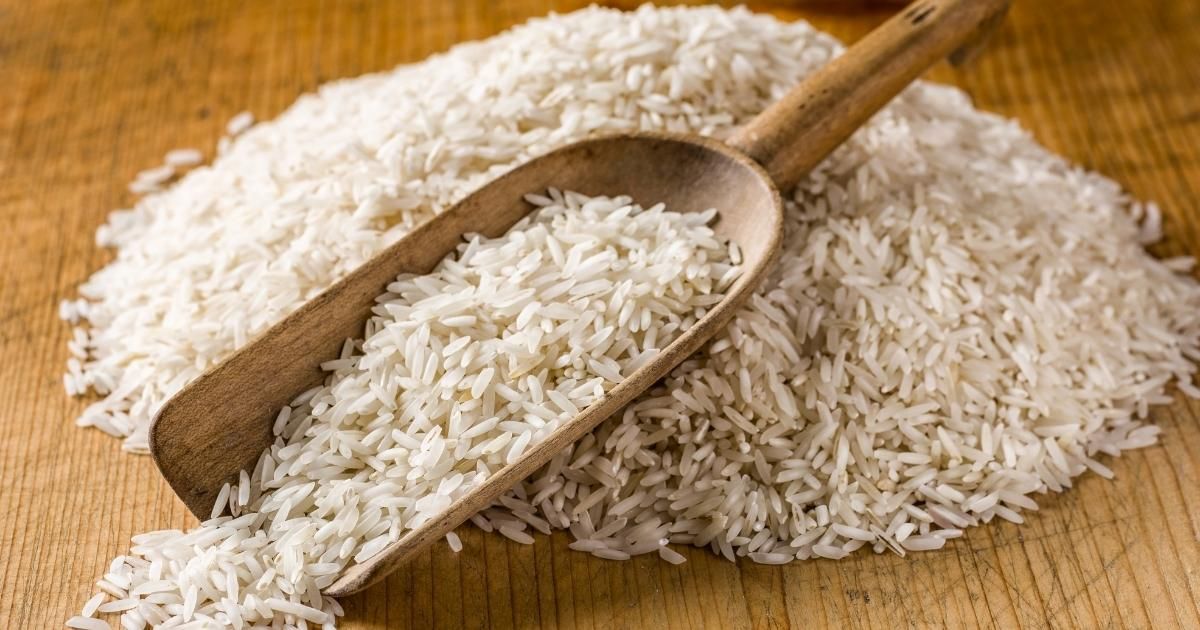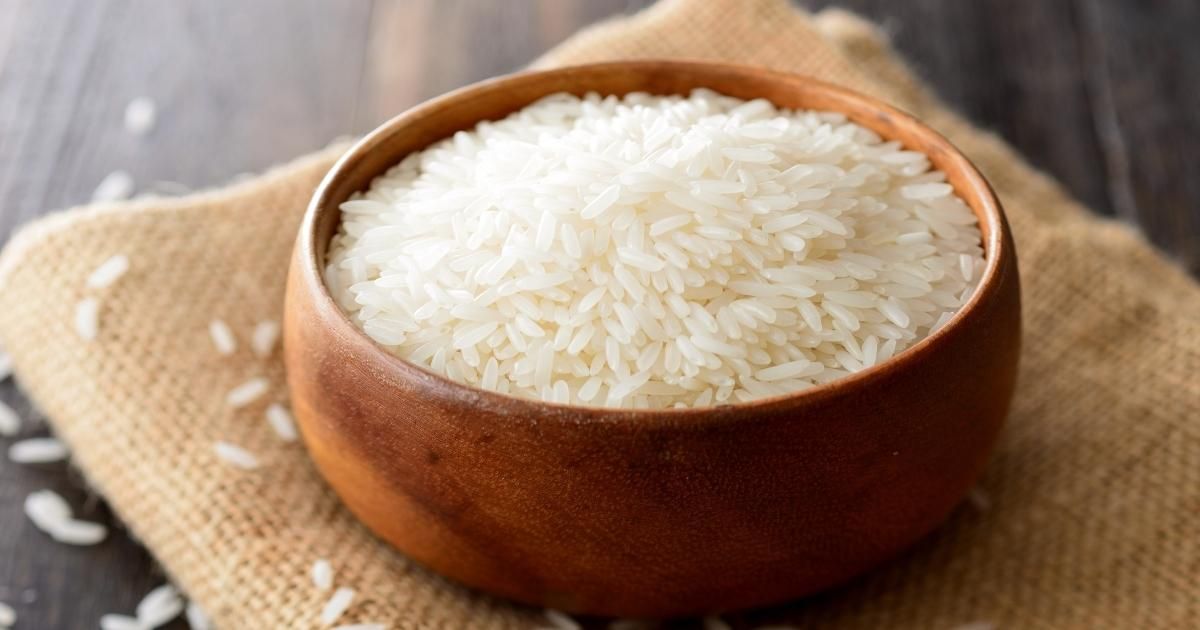What Are The Different Types of Rice?
What are the different types of rice, and how to cook them? All kinds of rice are particular, and you must cook them differently! Learn to cook every type of rice.
There’s more than one type of rice. In fact, there are more than you can count! All the different types of rice are best suited for specific dishes, so learning more about them pays off. All the types of rice are lovely!
Here’s all you need to know about the different types of rice and how to cook with them. You’ll surely find a new favorite rice amongst this extraordinary grain family.
What Are The 10 Different Types of Rice and How To Use Them?
Rice is the seed of an ancient grass. It is originally from Asia, but many species have been domesticated throughout the ages. The cereal grain is a staple food in many countries worldwide, and it has conquered all five continents.
Rice, though, is not all that easy to cultivate; farmers must flood the fields to allow the young seedlings to thrive in a painstaking process. The result is one of the purest and most versatile grains out there. Here are the different types of rice explained. What’s your favorite?
1. Black Rice
Black rice is a rarity, but it is common in Indonesia, the Philippines and Thailand. It comes without saying this rice is a beauty — it can make any rice dish look like a million bucks. It was once reserved for the upper classes in China!
Black rice is a type of sticky AKA glutinous rice, so you can use it to make puddings, porridge and many rice-based desserts, including the famous black rice cakes. Rice noodles can also be made with this type of rice.
2. Basmati Rice
The most common rice variety in India is also immensely popular worldwide. This is a long-grained type of rice, and it’s interesting for its unique pandan-like aroma — it’s nutty and buttery!
This pretty-sturdy type of rice can take the heat, so you can stir-fry it and toss it in cooking oil. It won’t stick that easily, producing golden, somewhat crispy rice dishes. You won’t get creamy results with basmati, but a terrific side for saucy dishes.
3. Arborio Rice
This type of rice was developed in Italy, in the fertile Po Valley that runs through the country’s northern regions. Arborio rice has firm, creamy and chewy short grains. This one is amongst the starchiest types of rice, so the dishes made with it often feel more filling and wholesome.
From rice pudding to the famous risotto, arborio is one of the tastiest types of rice for its rich texture. Cook arborio rice with wet methods over medium-low temperatures.
4. Bomba Rice
This Spanish rice variety gets its name for its round, bubble shape. The short grain comes from the Middle East and might be related to an Indian variety. It arrived in the Iberian country during Spain’s Arab rule, and it became a prevalent crop on its Mediterranean coast, especially in Valencia.
Valencia, of course, is famous for its paella, the single most popular rice dish in Spain. Bomba rice is perfect for cooking on a hot pan over an open flame, and it absorbs broth very well, so it ends up flavorful and firm but moist.
5. Brown Rice
Brown rice is a common name for whole grain rice, which comes with the hull, bran and germ. The dark hull gives the rice its tanned color, which is beautiful, but it has its pros and cons.
Brown rice is much more nutritious than any white rice; it has more nutrients and fiber. However, brown rice needs longer cooking times, which is not very convenient. The result is a nutritious bowl of rice that looks beautiful on the plate. For easier cooking, look for “broken” brown rice; it cooks faster, as the starch is exposed.
6. Glutinous Rice
There are many types of glutinous or sticky rice, and they’re all widely consumed in Asia. Think of sushi. The rice gets increasingly sticky when cooked for its high amounts of starch. Amylopectin, a compound present in this varietal, makes it sticky, and it’s a desired trait amongst rice enthusiasts.
This type of rice has been around for 2,000 years, so it’s the main ingredient in many recipes. To cook it, use vapor and, traditionally, add a splash of rice vinegar to it to give it flavor. Leftover glutinous rice is perfect for stir-frying!
7. Red Rice
Red rice is even darker than brown rice, but it’s remarkably similar in composition. Red rice comes with its hull, although partially unhulled varieties exist. This is a nutritious rice with a low glycemic index, and it’s digested very slowly. It’s easy to see why health trends often recommend this type of rice over others.
To cook red rice, steep it in water for a few hours before boiling it for at least an hour. Once cooked, you can drain it and prepare it any way you want! This one’s wonderful in stews and rich broths.
8. Jasmine Rice
Undoubtedly, the rice with the prettiest name, jasmine rice, is a long-grain variety used in Thailand, Laos and Cambodia. And yes, jasmine rice is pretty aromatic.
Not precisely a sticky variety, jasmine rice is stickier than your standard white rice but not as sticky as Japanese varieties. The single best way of cooking jasmine rice is by steaming it — that way, it doesn’t lose its fragrance. Other than that, this is a versatile type of rice that goes well with chicken, beef, pork and even desserts! Mango sticky rice, anyone?
9. Kalijira Rice
This lovely Indian rice is often called baby Basmati. It’s not as fragrant as authentic basmati, but it is starchier, so it’s creamier when cooked and not as firm.
You’ll find kalijira rice in specialty markets, along with other items from Bengal, India. To cook this starchy medium-grained variety, boil it thoroughly, just like you would do with pasta. The rice will release a lot of starch, and it becomes super tender and fluffy. Kalijira is wonderful with curries.
10. Wild Rice
Wild rice is a term for several species of grass not related to typical rice (Oryza Sativa). These are entirely different grains, but they are pretty similar to rice and have similar uses.
Of course, wild rice is not wild anymore. It has been domesticated, and it’s grown extensively by farmers worldwide; the grain, though, still has a “wild” personality, as it is often sold with its hull and bran, so it’s quite nutritious and fibrous. Cook wild rice like brown rice for extended periods simmering in water.
What is Your Favorite Rice?
If you didn’t know, now you know. Rice is incredibly varied, and it can play many roles. Enjoy the different types of rice for breakfast, lunch and dinner, for weeknights and special dinners — there’s nothing rice can’t do. You might not find all the types of rice near you, but we’re reasonably sure the rice you have in hand will work just fine for many recipes.
Rice is one of the most essential grains globally, and millions of people depend on it, let’s give rice the recognition it deserves! Besides, rice is delicious! How do you cook yours?
Rice Soup
Asian rice soup, also known as congee or jook, is a classic dish in many Asian countries. This simple and comforting soup made from rice and water or broth...
Mexican Rice
If you love to cook and eat Mexican food, this side dish may be your favourite. A few ingredients are needed for this easy-to-prepare and delicious rice...
Chicken Fried Rice
A delicious recipe from Asian cuisine: Chicken Fried Rice! This hearty and protein-packed recipe is made with juicy-tender chicken and rice. This easy-to-make...
Sushi Rice
Making sushi rice is actually not difficult. Rice, which forms the basis of the most delicious dishes of Japanese cuisine, is one of the elements that...
Stuffed Rice with Nuts
Heat the butter and olive oil. Add pine nuts and almonds and sauté.Wash the rice in hot water for 15-20 minutes and soak it.Add the black pepper, chili...
Turkish Rice Pudding
Wash the rice and put in a pan. Add 3 cups of water and cook until water is absorbed. Add the milk and mix.Puree the wheat starch with half a glass of...



































